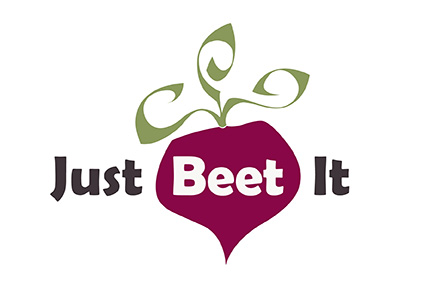Many people don’t understand the importance of their diet, and for some people, food is just a tasty way to survive on earth. No doubt we can’t live if we don’t eat anything, but we should also think of the long term impact from the foods we eat.
Understanding our diet is vital for living a long and healthy life. Many foods and drinks give us enough energy to keep working for a few hours but may also bring several problems, depending on the foods and how our bodies respond to them.
It’s important to maintain the right proportion of carbs, protein, calcium, fat and other necessary nutrients to function properly. Not taking care of these proportions may make us weak and unhealthy as well as invite many ailments. Following a carefully planned meal routine (that is right for your preferred diet) is a great way to provide nutritional balance.
This article shares some important tips on how to plan a well-balanced meal plan/routine for a healthy lifestyle.
Cheers to living your best life!
7 TIPS FOR CREATING A HEALTHY AND WELL-BALANCED MEAL PLAN
#1 Eat Beets & a Variety of Vegetables for Countless Benefits
Vegetables, such as beets, are rich with nutrition and should be added into every meal plan/routine. The beet has very few calories but is high in nutrients. Like Kale, Chard, and Spinach, beet greens (the leafy portion of the beet) are filled with iron, numerous trace minerals, and Vitamin K.
Furthermore, the beetroot portion is unbelievably high in antioxidants that can help keep blood pressure in check. Beets help fight inflammation and improve digestive health. One cup of beetroot provides 3.4 grams of fiber and numerous health benefits. Like eating most vegetables, it’s up to you to decide whether to eat them every day, twice a week, or once a week in your healthy meal plan; however, the more you add them to your diet, the better!
#2 Include Ample Fruits in Your Diet
It’s no new discovery that fruits are full of nutrients. Fresh fruits provide many important vitamins, such as Vitamin C, Vitamin A, and Vitamin K along with essential trace minerals, fiber, and antioxidants. In addition to supporting your health, fruits are also very delicious! Eat fruit raw in lunch or as a snack. Adding fruits to smoothies is also another way to add more healthy foods to your diet. It’s important to include ample servings of fruit in your diet each day for numerous health benefits.
#3 Include Calcium-Rich Foods in Each Meal
If you eat and/or drink dairy products, low-fat organic milk and cheese products can be very effective in strengthening your bones and providing necessary calcium in your diet and meal routines.
If you follow a vegan diet, don’t like dairy products, and/or are lactose intolerant, there are many delicious foods and drinks, such as nuts, seeds, and vegetables that provide great sources of calcium. Nut milks (like almond and walnut) and dark leafy green vegetables, such as kale, chard, beet greens, and spinach contain high amounts of calcium.
#4 Add Lean Sources of Protein
Protein is vital for creating a well-balanced and healthy meal plan. Converting to lean proteins provides sustainable energy with lesser calories (than heavier more fatty proteins). Protein helps with satiety and regulates blood sugar. There are many sources of protein. Lean proteins include (but are not limited to) white-fleshed fish, seafood, white meat poultry, and lean beef, like bison.
Vegetarians and vegans can rely on high protein-foods like beans and lentils, tofu, nuts, quinoa, chia seeds, spelt, and hempseeds. There are many protein-based vegetarian and vegan meal options.
Making sure each meal is filled with sufficient protein will help create a healthy meal plan each week.
#5 Say No to Unhealthy Fats and Processed Foods
It goes without saying that it’s best to avoid any extra fast foods, unhealthy processed snacks, and sodas. Eliminating foods filled with processed oils, unhealthy fats, and high sugars will help create a balanced meal. In can be challenging at first, but try reducing your intake of fatty cheeses and heavy foods (like gravy, etc.) at meals, and for snacks, eat more fresh foods, like vegetables dipped in hummus or a banana with almond butter rather than heavily processed chips or processed meats. If you really hate this food regime, try to use low-fat Parmesan or Mozzarella cheeses in place of fatty cheeses and slowly reduce the amount of processed foods you eat on a daily basis until you get used to your new way of eating.
#6 Try New Foods
In addition to using the above discussed ingredients, you should also not shy away from trying new dishes. Buy a new recipe book or search the internet for meals you can make with healthy and diverse ingredients. It will not only be fun to taste so many dishes, but you also won’t get bored with this healthy way of eating. Also, who knows? You might find a new favorite food that you didn’t know existed!
#7 Control Your Meals and Food Intake
It’s not exactly a “piece of cake” to suddenly change your diet, so try to change one little thing at a time. Old habits may be challenging to overcome, but with time and dedication, hopefully you will gain control over what you eat within a few weeks or a month. Many healthy foods may not be satisfactory to your taste buds, but over time, your taste buds will adjust. You can use the help of a meal plan creator application to get started. Using a meal plan creator will help create the right plan, so you can succeed with the best meal plan and routine unique to YOU.
Lastly, don’t give up. Finding a healthy and well-balanced meal plan/routine that works for you may take time, but it’s worth it!
Photos by: Almond Milk Image by rawpixel from Pixabay / Tofu Image by Anh Nguyen on Unsplash
YOU MAY ALSO LIKE












